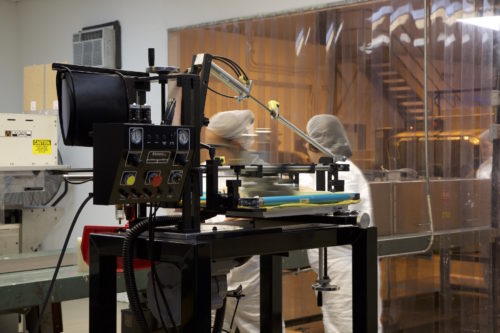
Automation is one way employers continue to improve worker safety, and those automated systems are enhancing the quality of the workday for employees in many ways. By allowing robotics to handle work that is tedious or dangerous, employees can put their skills to better use in other areas of the business.
Less Immediate Danger
Automation can take workers out of harm’s way while the machines do the delicate, monotonous, or dangerous work. Advances in technology have also allowed for shorter work days, further reducing employee fatigue (and the associated errors in judgment) while separating the workers from sharp or fast-moving equipment components and hazardous fumes, particles, and other toxic substances.
An automated system, combined with a worker safety plan that includes audits, regular reporting, and strict rules regarding protocols and personal protective equipment, creates a safer work environment. This helps cut down on the catastrophic accidents that result in broken bones, head injuries, lost limbs, and other severe injuries.
Fewer Chronic Injuries
In 2017, every workplace injury came with an average cost of $39,000 in missed work days and workers’ compensation. With 104 million missed work days that year alone, the cost for businesses is extraordinary—and that doesn’t begin to address the reduced morale, private healthcare and family costs, and potentially long-lasting effects for the injured employee.
The acute workplace injuries caused by a trip-and-fall or a machine malfunction tend to get a lot of attention, but you can’t overlook the chronic injuries that sideline millions of workers every year. Injuries like tendonitis, carpal tunnel syndrome, rotator cuff injuries, and lower back pain are often the result of a repetitive task that puts an ongoing strain on the body, of which there are many in a manufacturing facility. Automated systems can do a lot of these repetitive, demanding tasks to improve productivity, use materials more efficiently, and produce a higher-quality product while reducing an employee’s risk of chronic injury.
It’s worth noting that when an employee is missing from the job site, it puts other employees at risk as they work to fill in the gap. They may be overworked and fatigued as they try to make up for lost productivity, or they may not have the training and experience with the tasks that are normally completed by the absentee. Even if you bring in a new employee on a temporary basis, that person can also increase the overall risk of injury for everyone because they’re not as familiar with the facility and the tasks assigned to them.
Less Exposure to Toxins and Fewer Long-Term Issues
In addition to protecting employees from being exposed to toxic fumes and chemicals and putting them at risk for potential long-term illnesses and complications, automation and advanced technology can help companies reduce toxins in the first place. With predictive toxicology, how a particular chemical will behave and affect people can be determined based on its molecular structure and more. This will allow companies to test the toxicity of their products and environments in advance.
It’s true that automation improves productivity and product quality to improve the bottom line, and companies may be attracted to these solutions for that reason. However, automated systems serve another important purpose: improving worker safety.
Safer conditions improve the quality of life for employees, not only because of improved health and reduced healthcare costs, but because they feel secure, cared for by their employers, and confident in their ability to do their jobs well. As automation takes over repetitive and often boring tasks, employees are free to pursue new opportunities and roles within the organization, leading to career challenges and growth.
At PF Technologies, we harness the power of automation to provide quick turnarounds on defect-free products for our customers and create a safe working environment for our incredible team of employees. Contact us to learn more about our extensive capabilities in cosmetic coatings, printing and die cutting, and more.
